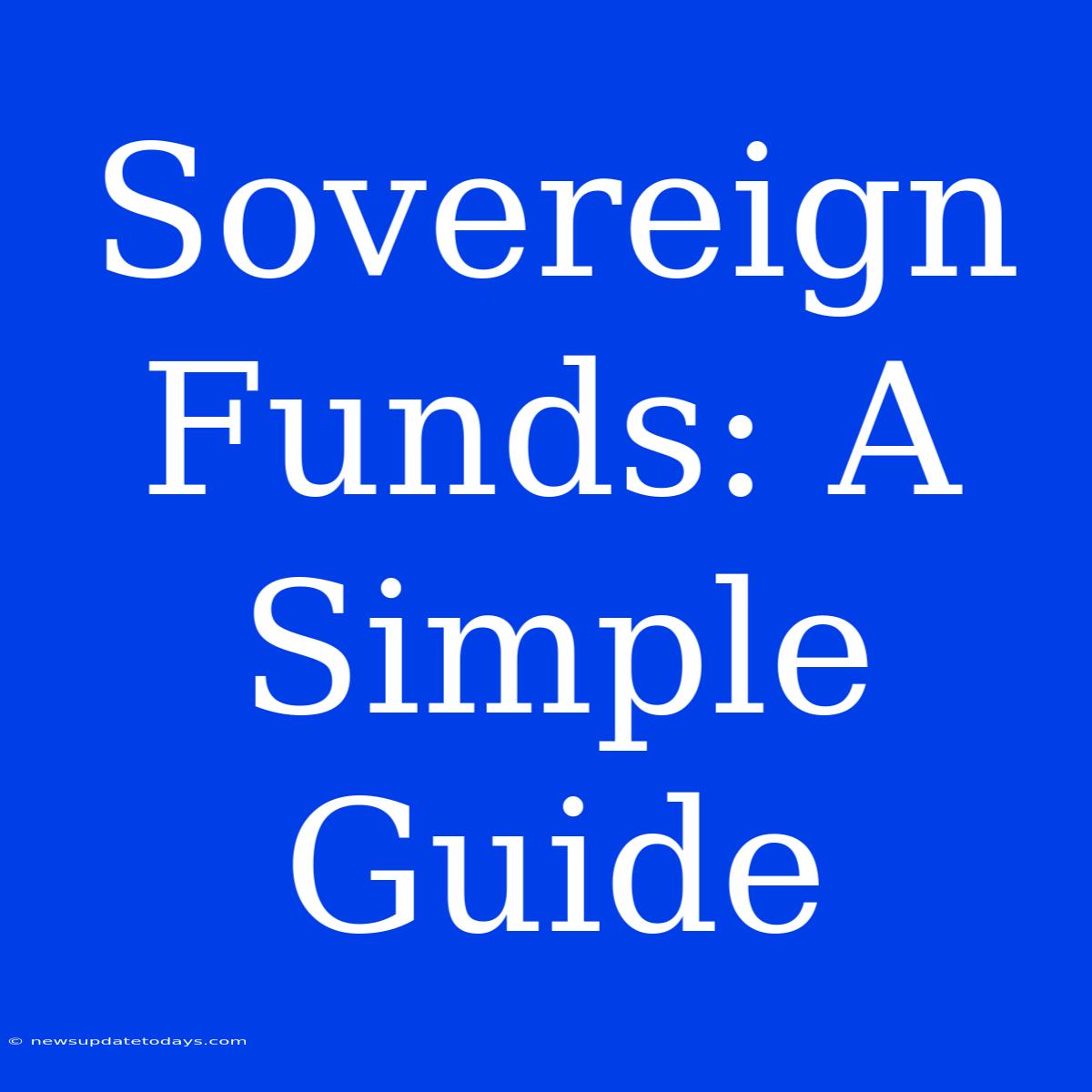Sovereign Funds: A Simple Guide to Understanding Global Wealth
Sovereign wealth funds (SWFs) are investment vehicles controlled by governments. They hold vast sums of money, often derived from a country's natural resource revenues (like oil or gas) or foreign exchange reserves. Understanding SWFs is crucial, as their investments impact global markets and economies. This guide provides a simple explanation of what they are, how they work, and their significance.
What are Sovereign Wealth Funds?
At their core, SWFs are state-owned investment funds. They're different from typical government budgets because their primary purpose is long-term investment, rather than immediate spending on public services. Think of them as national savings accounts, carefully managed to generate returns for the benefit of future generations.
Several key characteristics define SWFs:
- State Ownership: They are wholly or majority-owned by a national government.
- Long-Term Investment Focus: Their investment horizons typically extend beyond a single political cycle.
- Diversified Portfolios: They often invest across a range of asset classes, including stocks, bonds, real estate, and private equity.
- Professional Management: SWFs are typically run by teams of experienced financial professionals.
- Strategic Goals: Beyond financial returns, SWFs may pursue strategic goals such as diversifying a nation's economy or strengthening its international influence.
How Sovereign Wealth Funds Work
The process generally involves several stages:
- Revenue Generation: The source of funds varies widely, but often includes export revenues (especially commodities), privatization proceeds, and budget surpluses.
- Investment Strategy: A robust investment strategy is developed, focusing on risk management, diversification, and long-term growth. This often involves engaging external fund managers and advisors.
- Investment Deployment: Funds are allocated across various asset classes based on the chosen strategy.
- Performance Measurement: Regular performance monitoring and reporting ensure the fund meets its objectives and benchmarks.
- Distribution of Returns: Profits are usually used to support government initiatives, fund national development projects, or strengthen the nation's financial position.
Types of Sovereign Wealth Funds
SWFs aren't all the same. They are often categorized by their primary objectives and investment mandates:
- Stabilization Funds: These funds aim to smooth out volatility in government revenues, often from commodity prices.
- Development Funds: Focused on supporting national economic development goals through strategic investments in domestic and foreign projects.
- Reserve Funds: These funds act as a buffer against economic shocks and external pressures.
- Pension Funds: Managed to fund future pension obligations for the nation's population.
The Impact of Sovereign Wealth Funds
SWFs are major players in global financial markets. Their investments significantly influence asset prices, creating both opportunities and challenges:
- Increased Investment Capital: They inject significant capital into markets worldwide, stimulating growth and development.
- Geopolitical Influence: Their investments can be strategically used to advance national interests and shape global political landscapes.
- Market Volatility: Large-scale transactions by SWFs can create short-term market volatility.
- Regulatory Scrutiny: Their size and potential influence often lead to increased regulatory oversight and transparency requirements.
Examples of Notable Sovereign Wealth Funds
Some of the world's largest and most influential SWFs include:
- The Government Pension Investment Fund (GPIF), Japan: One of the world's largest pension funds.
- The Norwegian Government Pension Fund Global (GPFG): Known for its ethical investment guidelines.
- The China Investment Corporation (CIC): A significant investor in global markets.
- The Abu Dhabi Investment Authority (ADIA): One of the oldest and most secretive SWFs.
Understanding sovereign wealth funds is increasingly important for navigating the complexities of global finance and understanding the dynamics of national economic policies. Their role in shaping the future of global investment and economic development is undeniable.

